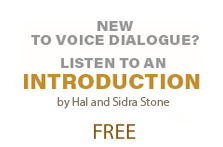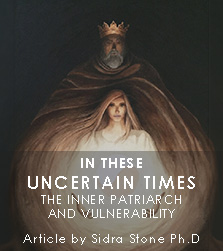| Relevent Links Books |
| Partnering |
| The Shadow King |
Bonding patterns are the default setting in relationships; they are the natural settings that are programmed into us at birth. A bonding pattern is the normal and natural way that the baby relates to its mother and the mother relates to the baby; it’s the way in which we give and receive nurturance. If the baby didn’t relate by taking nourishment from the mother and the mother didn’t feel good about giving nourishment to the baby - if there is no bonding - there is trouble. Without this parent/child bonding, the baby doesn’t thrive.
But, when we are no longer infants this default position for relationship remains and is no longer so useful. If we look carefully, we find that we are relating to others in the same parent/child fashion. The mother or father in us relates to the child self in another and, conversely, the child self in us relates to the mother or father in the other. This is still natural and normal – but for most people it is no longer rewarding. There are many ways in which this can show itself and we can’t look at them all here, but we can give you an example of this default setting – a classic bonding pattern.
Mary is a feeling person and has a tendency to become a caretaker. This caretaking self in her would “bond in” with John’s unspoken needs and take care of him. When her “default setting” takes over, she must take care of John and his unspoken feelings even if this means she does not take care of herself – she has no choice in the matter – a role she invariably assumes with men. As this happens, his default setting takes over and he becomes more and more rational in his behavior and distances more and more from his own feelings. He has no choice in the matter either - he becomes the thinker and planner in the relationship - and he is the responsible, stoic, well-organized father, a role he invariably assumes with women.
When we look at this bonding pattern, we can see that the mother part of Mary is taking care of the son part of John while the father part of John is taking care of the daughter part of Mary. Neither has any real choice in the matter, and neither can bring the fullness of themselves to the other. John can’t feel his feelings and Mary can’t use her brains.
Beyond the Bonding Patterns
Think of it as setting the preferences on your computer. You can still use the default settings, but you now have choice. You can change the details of the relationship - just the way you can change the preferences on your computer -so they suit you.
So if we go back to Mary, once she moves beyond the bonding pattern she has choice. She may still take care of John’s emotional needs, but she now can take her own emotional needs into consideration. She can also see that John carries a very important disowned self for her – the mind that she had totally forgotten about, the mind that she had disowned when she was a little girl. She can use her relationship to John to help her reclaim her mind rather than depending upon him to carry the thinking for both of them for the rest of their lives. She then has access to both her feelings and her thinking.
And John can have choice as well. He may still want to carry most of the responsibility for thinking things through, but he can begin to ask Mary to figure things out and to take some responsibility for the planning in their lives. He can learn about his feelings and begin to pay attention to them. He can use the relationship to Mary as a way to reclaim the feelings that he never knew he had, the feelings he disowned when he was a boy and he developed his mind as a primary self. Thus it is that relationship can become a powerful teacher for both of them.
The Possibilities
You can begin to see the amazing possibilities for growth (and healing) that open up for you when you look at your relationships in this way. To learn more about bonding patterns - both positive and negative - we invite you to print out and read the article Making Relationships Work for You on this website. For more information, see our books, Partnering and Embracing Each Other.
An Introduction to Voice Dialogue, Relationship, and the Psychology of Selves gives an in-depth, complete and clear introduction to the bonding patterns in a set of 2 CDs and Partnering: The Art Of Conscious Relationship is a set of 10 CDs recorded live that gives our most recent presentation on this topic.
Bonding patterns give a new - and creative - way to look at complex relationships such as the transference and Stepparenting.
Refer to individual CDs on specific selves (particularly The Inner Critic, The Child
Within, The Psychological Knower, The Pleaser, The Voice of Responsibility,
and The Rational Mind)
![]()






